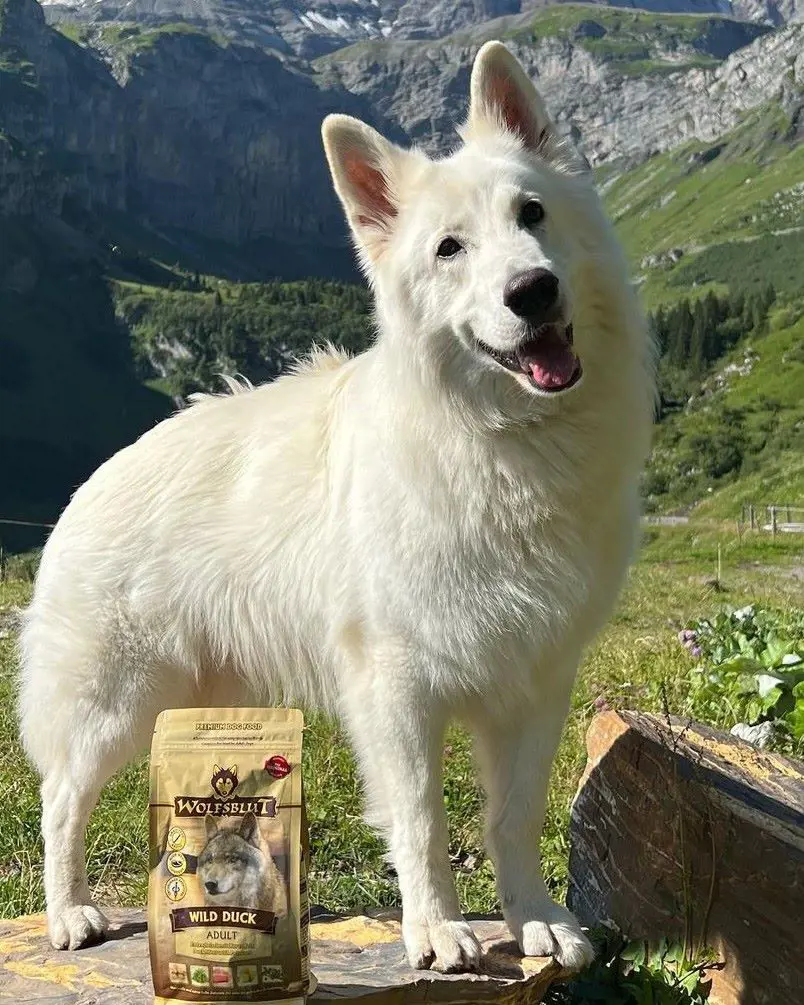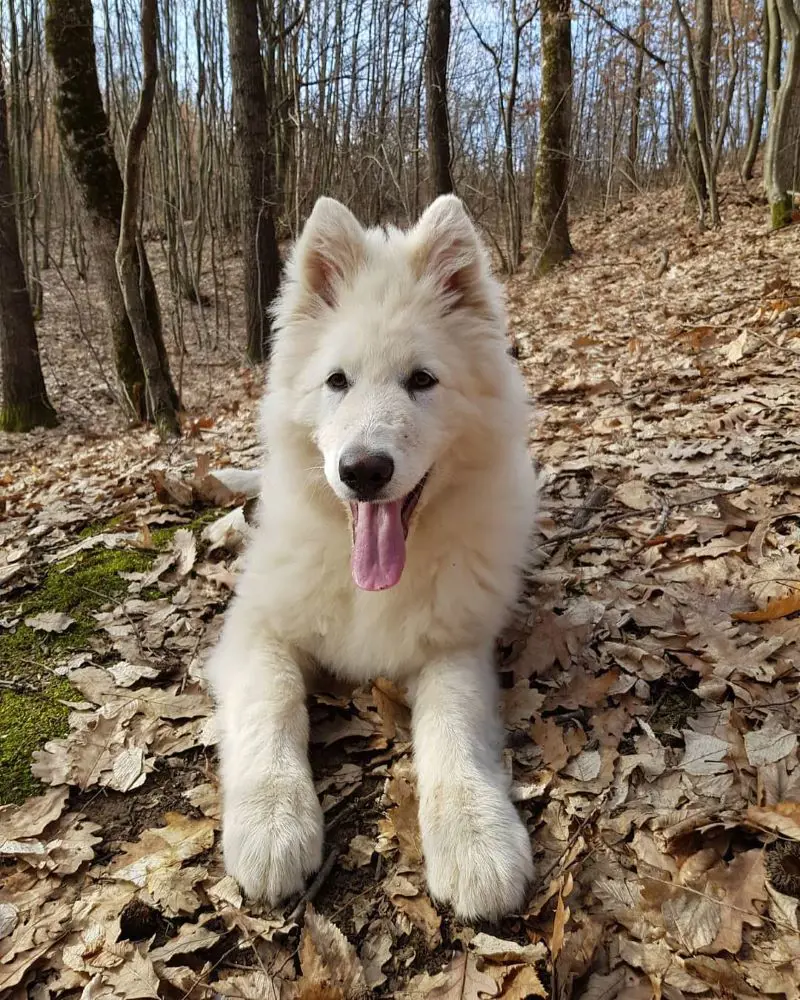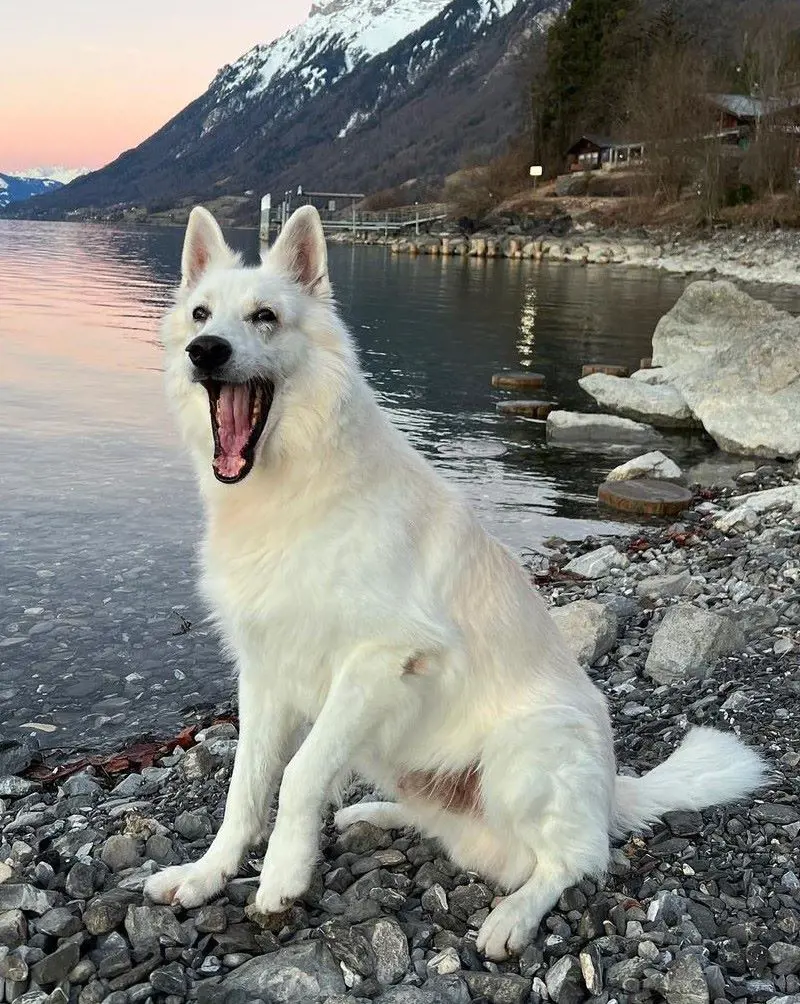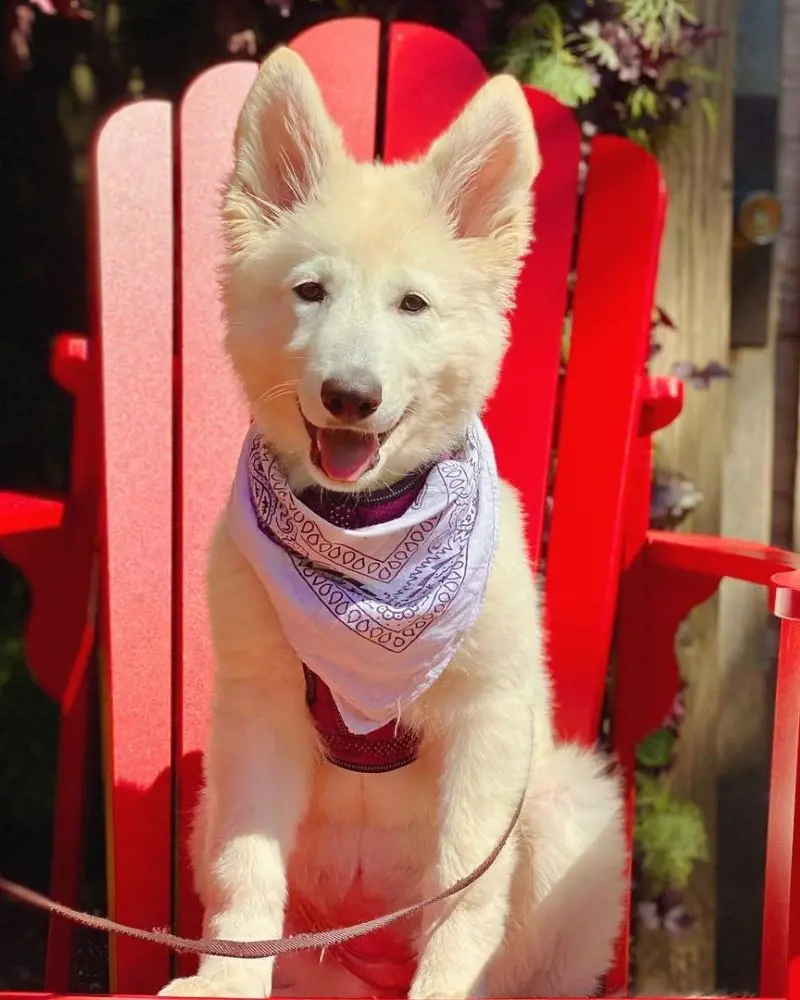Swiss White Shepherd Dogs: Breed Information And Facts

The Swiss White Shepherd is an enchanting breed known for its intelligence, loyalty, and striking appearance. These magnificent dogs have a strong resemblance to the classic German Shepherd, but with a beautiful white coat that sets them apart.
In fact, the Swiss Shepherd is considered a great alternative to the German Shepherd (GSD), especially for people who want a GSD but don't necessarily adore its signature multi-colored coat. Besides their adorable looks, these dogs also excel in various activities such as obedience, agility, and search and rescue work.
Today, we've made a detailed analysis of the Swiss breed, with info on its origin, appearance, lesser-known facts, and more.
The Breed Was Officially Recognized In 1991

The Swiss White Shepherd is a breed that originated from Switzerland in the late 20th century. Its origin can be traced back to the German Shepherd (GSD) breed. In the early 20th century, GSDs were selectively bred for specific traits, such as working ability and appearance. However, some breeders were also interested in maintaining their original white coat color.
The white-coated German Shepherds were often considered a fault and were not accepted by breed standards. However, they gained popularity among enthusiasts due to their unique appearance. Eventually, these white-coated dogs were separated from the breed and started to be bred separately.
In Switzerland, a group of breeders led by Agatha Burch aimed to develop a breed that possessed all the qualities of a GSD but with a focus on preserving the white coat color. They began a breeding program in the 1970s, using white-coated German Shepherds and carefully selecting for temperament, health, and working abilities. Thus, the White Swiss Shepherd came into existence; the breed was officially recognized by the Federation Cynologique Internationale in 2002 and by the British Kennel Club in 2017.
They Have A Unique Appearance

The Swiss White Shepherd is a medium-sized dog with a strong and muscular build. The breed has a well-proportioned body, slightly longer than tall, and a proud, noble stance.
1. Size
The breed is classified as a medium to large-sized breed. Males typically stand between 24 to 26 inches (60 to 66 cm) tall at the shoulder. Meanwhile, females are slightly smaller, ranging from 22 to 24 inches (55 to 61 cm) in height.
2. Eyes
These canines have almond-shaped eyes that are medium-sized and dark. The eye color can vary, but the most common colors are dark brown, amber, or a combination of both.
Some individuals may also have lighter shades of brown or greenish eyes. The eye color can sometimes change as the dog matures, with puppies often having lighter eyes that darken as they grow older.
3. Ears
The breed is famous for its triangular ears that are set high on its head. They are erect and slightly rounded at the tip, which gives the dog an alert and attentive appearance.
The ears are covered in thick fur, matching the coat color, and are well-furred on the inside as well. These ears are mobile and expressive, allowing the pup to communicate its emotions through subtle changes in ear position and movement.
4. Body
These dogs have a well-proportioned body with a straight back and a deep chest. It possesses a strong and muscular physique, exhibiting grace and agility.
5. Head
The head of a Swiss White Shepherd is in proportion to the body, with a well-defined stop. The breed has a straight, strong muzzle and a black nose.
The Breed Is Friendly And Loyal

The Swiss White Shepherd is a highly intelligent and versatile breed. They possess a gentle and calm temperament, making them an excellent family companion and therapy dog. Moreover, they are also extremely loyal, devoted, and eager to please their owners.
This breed is generally friendly and sociable with both humans and other animals. They are particularly fond of children and are often patient and gentle with them. Likewise, these canines are also known for their strong protective instincts, making them excellent watchdogs. They are vigilant and alert, always ready to protect their family if needed.
Despite their protective nature, the Swiss dog is not aggressive or overly dominant. They are highly trainable and excel in obedience and agility training. As they thrive on mental and physical stimulation, regular exercise and engaging activities are essential to keep them happy and well-balanced.
They Have A Thick Double Coat

The Swiss White Shepherd has a thick double coat that provides excellent protection and insulation against various weather conditions. The fur is medium to long in length and dense & straight in texture.
The outer coat of the Swiss White Shepherd is straight and harsh, which lies close to the body. It is designed to repel water and dirt, keeping the dog dry and clean. The texture of the fur is smooth and silky to touch. Likewise, the color of the coat is predominantly white, which gives the breed its distinct appearance.
Beneath the outer coat, there is a dense undercoat that provides additional insulation. The undercoat is soft, thick, and woolly, serving as a natural insulator against cold temperatures. During colder seasons, the undercoat becomes denser to keep the dog warm and cozy.
Overall, the fur and coat of a Swiss White Shepherd are beautiful, functional, and well-suited to their working and outdoor lifestyle.
They Are Prone To Hip And Elbow Dysplasia

Swiss White Shepherds, like any other breed, can be prone to certain health issues. Here are some common health issues that may affect this dog:
1. Hip Dysplasia
Hip dysplasia is a common condition in many large breeds, including Swiss White Shepherds. It occurs when the hip joint doesn't develop properly, leading to pain, lameness, and arthritis.
2. Elbow Dysplasia
Similar to hip dysplasia, elbow dysplasia is a developmental disorder affecting the elbow joint. It can cause lameness, pain, and arthritis.
3. Degenerative Myelopathy
Degenerative Myelopathy is a progressive neurological disease that affects the spinal cord. It typically starts with weakness in the hind legs and gradually progresses to paralysis. Unfortunately, there is no cure for this condition.
4. Progressive Retinal Atrophy (PRA)
PRA is a genetic eye disorder that causes progressive vision loss and can lead to blindness. Regular eye examinations are important for early detection.
5. Gastric Dilatation-Volvulus (GDV)
Also known as bloat, GDV is a life-threatening condition in which the stomach fills with gas and twists. It requires immediate veterinary intervention to save the dog's life.
Taking Care Of A Swiss White Shepherd

The Swiss White Shepherd is a generally independent breed that loves to take care of itself. However, they still depend on their human companions for a variety of daily life requirements like proper healthcare, training, nutritious diet, and more.
1. Training Requirements
Training the dog should begin at an early age, preferably as soon as you bring them home as a puppy. Early training is crucial to establish good behavior, socialization, and obedience. Start with basic commands such as sit, stay, and come, using positive reinforcement techniques like treats and praise.
Consistency, patience, and firmness are key in the training process. Also, regular and frequent training sessions will help develop a well-behaved and well-adjusted adult.
2. Exercise And Daily Walks
The pup belongs to an active and energetic breed that requires regular exercise and daily walks for effective physical and mental stimulation. They love to participate in various activities, including running, hiking, and playing fetch. It is recommended to provide them with at least 60-90 minutes of exercise every day to prevent them from becoming bored or restless.
These walks should be brisk and engaging, allowing them to sniff and investigate their surroundings. They also benefit from off-leash time in a secure area where they can run and play freely.
3. Grooming
These dogs should be brushed at least once or twice a week to remove loose hair and prevent matting. A slicker brush or a comb with wide teeth is recommended to effectively remove tangles and keep their coat neat.
During shedding seasons, which occur twice a year, more frequent brushing is necessary to manage the increased hair loss. Moreover, they should be bathed every 2-3 months to keep their coat clean and free from dirt and debris. It is important to use a mild dog shampoo that won't strip their coat of its natural oils.
Additionally, regularly checking and cleaning their ears, trimming their nails, and brushing their teeth are also essential parts of the grooming routine.
4. Vaccination And Routine Checkup
The Swiss White Shepherd is vulnerable to multiple diseases that also attack other dog breeds. They require vaccinations against diseases and health issues like rabies, distemper, canine parvovirus, canine hepatitis, bordetella, and more.
It is recommended to take your pet for an annual wellness check-up. During this visit, the vet will perform a thorough examination and address any concerns or health issues. Regular deworming and dental care are also crucial to maintaining sound health.
5. Dietary Requirements
These dogs need a well-balanced diet that includes high-quality proteins, healthy fats, and carbohydrates. The diet should also provide essential vitamins, minerals, and antioxidants to support overall health.
The dietary requirements may vary depending on the age, activity level, and health condition of the dog. Moreover, healthy fats, such as omega-3 fatty acids, are important for their skin and coat health. Fish oil, flaxseed, and salmon are excellent sources of omega-3s.
Interesting Facts About Swiss White Shepherd

Ever since its creation in the 20th century, the Swiss White Shepherd has seen an upward trend in its demand. However, before adopting one, you may need to be well-accustomed to the breed.
Here are a few facts that will help you to better understand the unconventional breed:
- They are also known as Berger Blanc Suisse, which means White Swiss Shepherd in French.
- The breed is intelligent and highly trainable, making it suitable for various tasks such as search and rescue, therapy work, and obedience competitions.
- They have a strong herding instinct and excel in activities like agility and herding trials.
- These dogs are known for their loyalty and protective nature, making them excellent family dogs and guard dogs.
- They have a lifespan of around 12-14 years. With proper health and diet, they can live up to late teenage.
- A male dog named Lobo is said to be the first dog of the breed. Lobo was born in Switzerland in 1966.
- Male Shepherds are typically around 25-28 inches (63-71 cm) in body length, whereas females are around 23-26 inches (58-66 cm) long. This breed has a well-balanced body structure with a strong and muscular build.
- Their average weight ranges between 55-88 pounds (25-40 kg). Males tend to be larger and heavier, weighing around 70-88 pounds (32-40 kg). On the other hand, females usually weigh between 55 to 77 pounds (25-35 kg).
Top Lists








